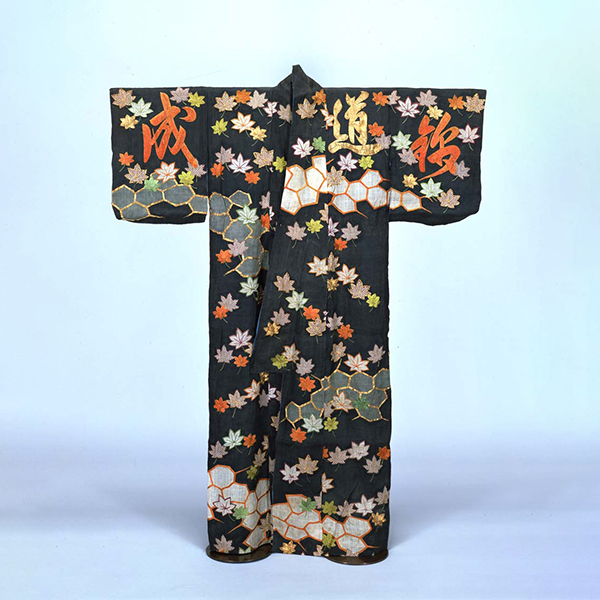The Art of Fashion | 17th–19th century
-

Summer Kimono ("Katabira") with Cracked Ice, Maple Leaves, and Chinese Characters
Edo period, 17th–18th centuryJapanese Gallery (Honkan) Room 10
June 24, 2025 (Tue) - August 24, 2025 (Sun)Japan's traditional clothing, kimono, are based on kosode — the outer wear of the Edo period (1603–1868). At first, the court nobility and samurai wore kosode under other clothing. But from about the 15th century, the samurai began using them as daily outer wear. In the 17th century, kosode became the most common clothing for men and women of all classes.
Wealthy women placed orders for custom-made kosode at luxury clothing stores. They often chose the patterns from clothing design books that were published and widely circulated. Together with these kosode, they wore hairpins and combs to accent their elaborate hairstyles.
In contrast, men wore kosode with understated patterns like stripes or checks.
Their usual fashion accessories were a small case (inrō) and a toggle (netsuke) for securing the case to the sash. This gallery features kosode and accessories, together with prints and paintings (ukiyo-e) showing how people wore them and how fashions changed over time.
| Designation | Name | Creation/ Excavation/ Provenance |
Period | Acquisition/ Ownership/ Accession Number |
CMT | ||
| Highlight | Summer Kimono ("Katabira") with Cracked Ice, Maple Leaves, and Chinese Characters | Edo period, 17th–18th century | I-3852 | ||||
| Highlight | Summer Kimono ("Katabira") with Kiyomizu Temple | Previously owned by Noguchi Hikobei | Edo period, 18th century | I-3959 | |||
| Highlight | Summer Kimono ("Katabira") with Landscapes, Pavilions, and Chinese Characters for the Genji Incense Game | Edo period, 18th century | I-2949 | ||||
| Highlight | Case ("Inrō") with Tea Ceremony Utensils | Meiji era, 19th century | Gift of Mr. Quincy A. Shaw, H-309 |
